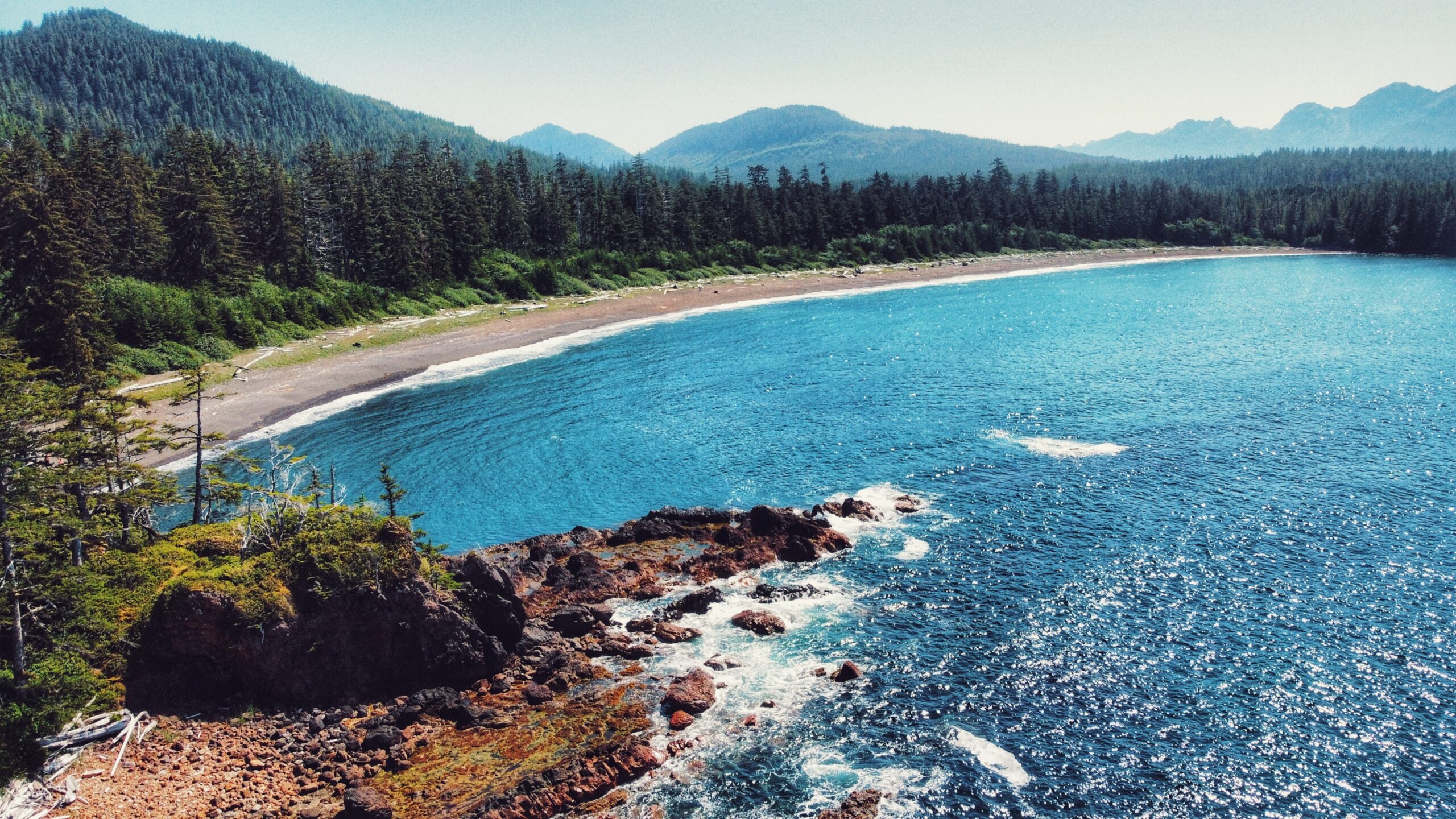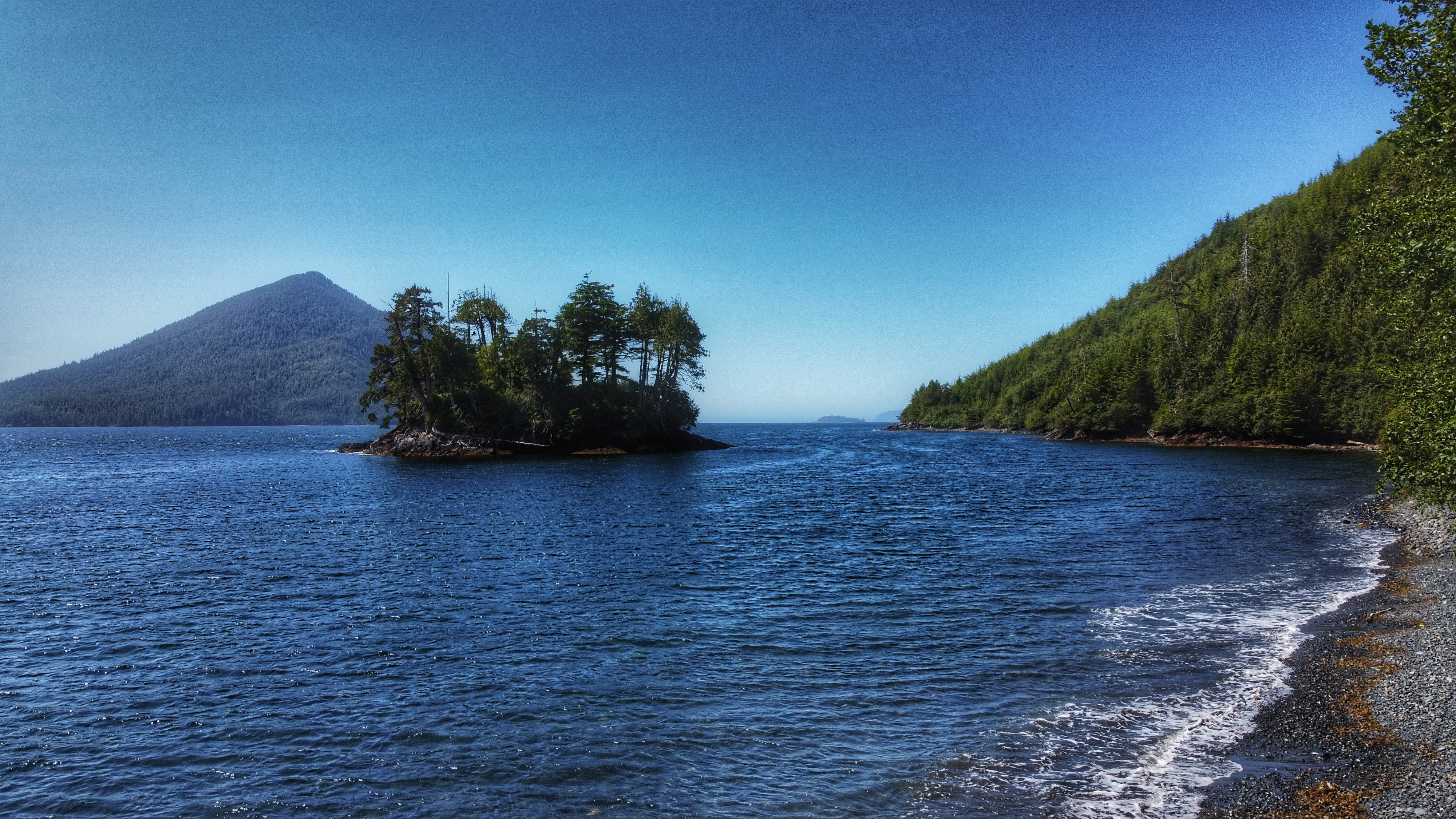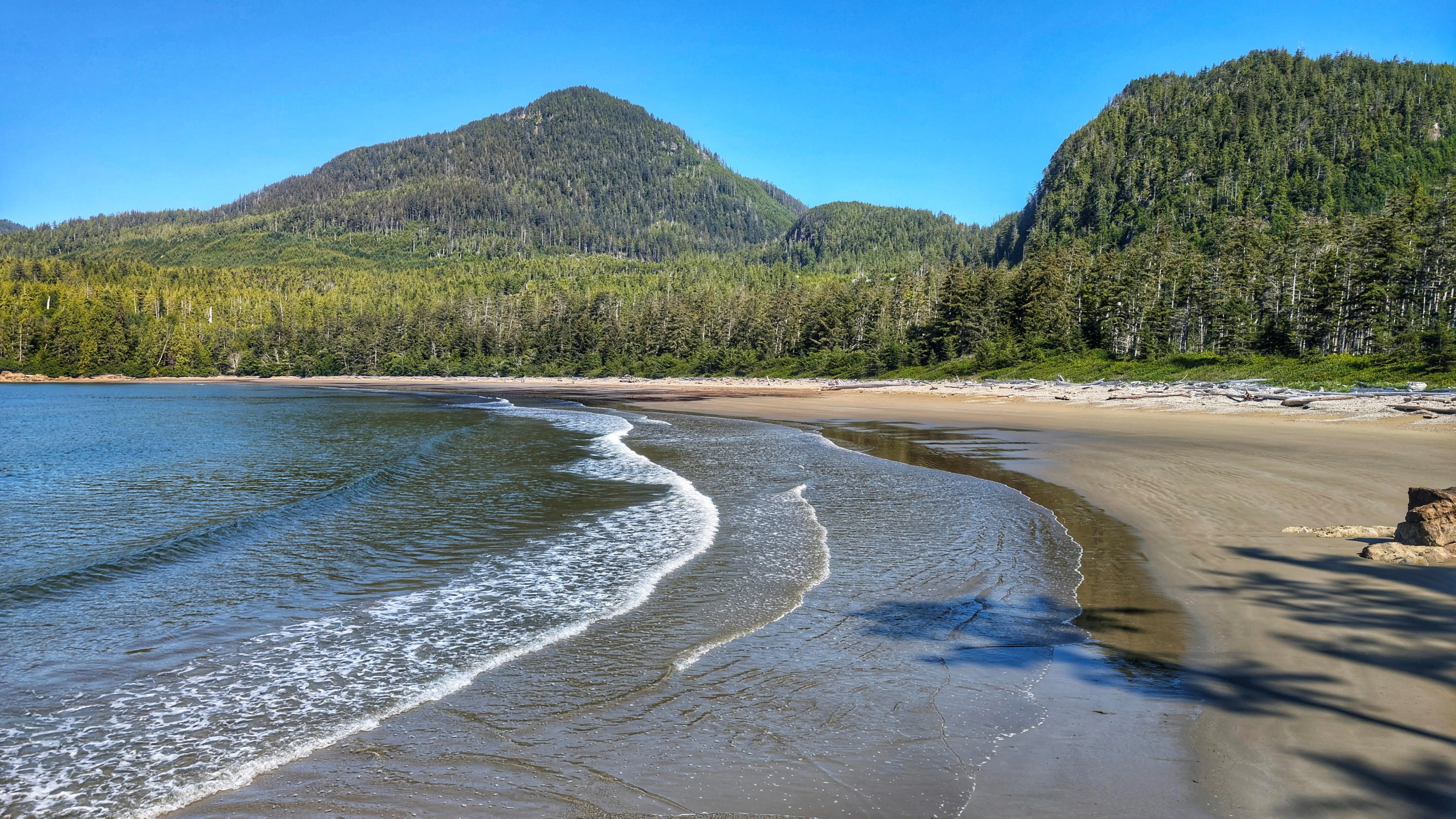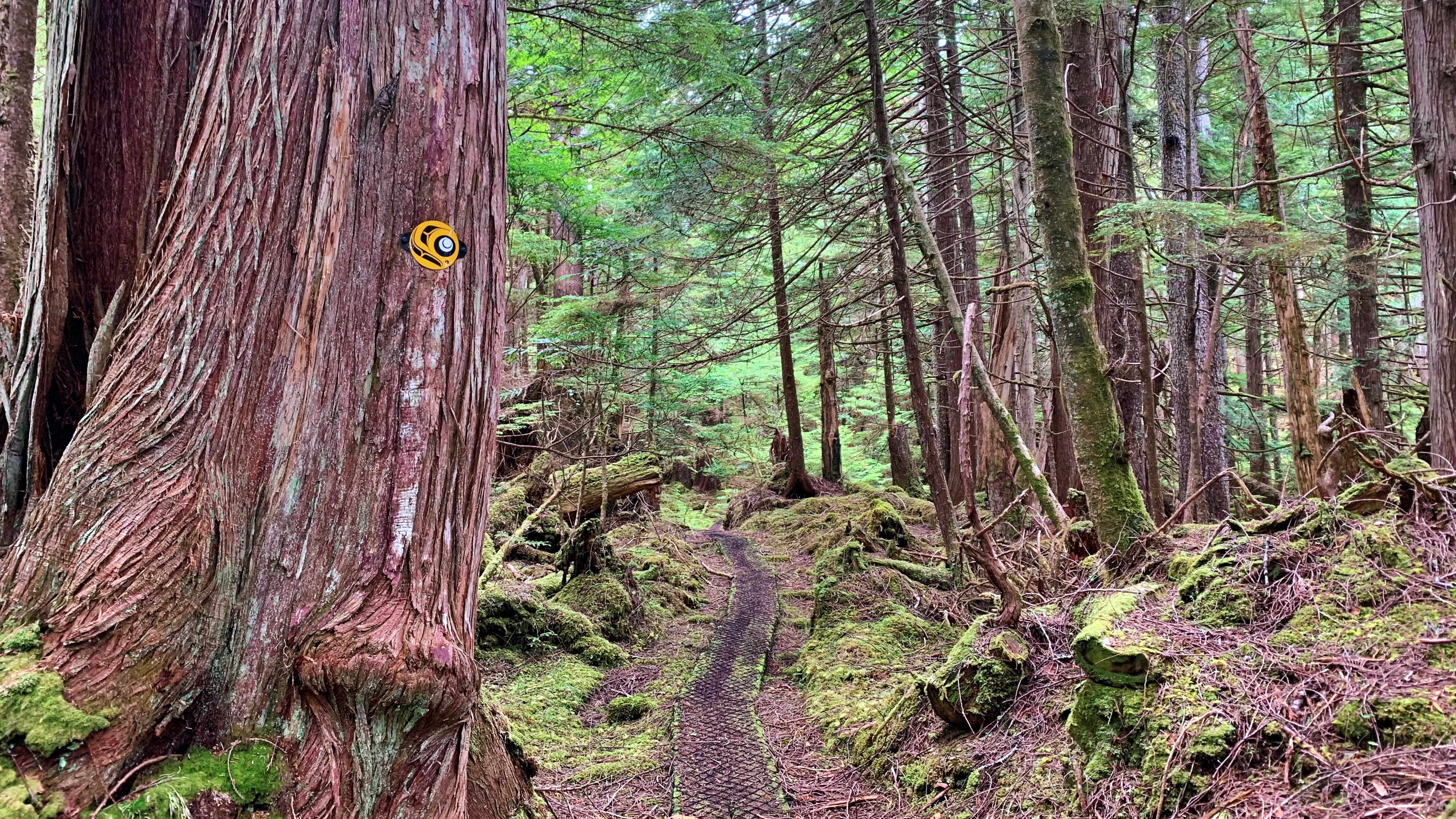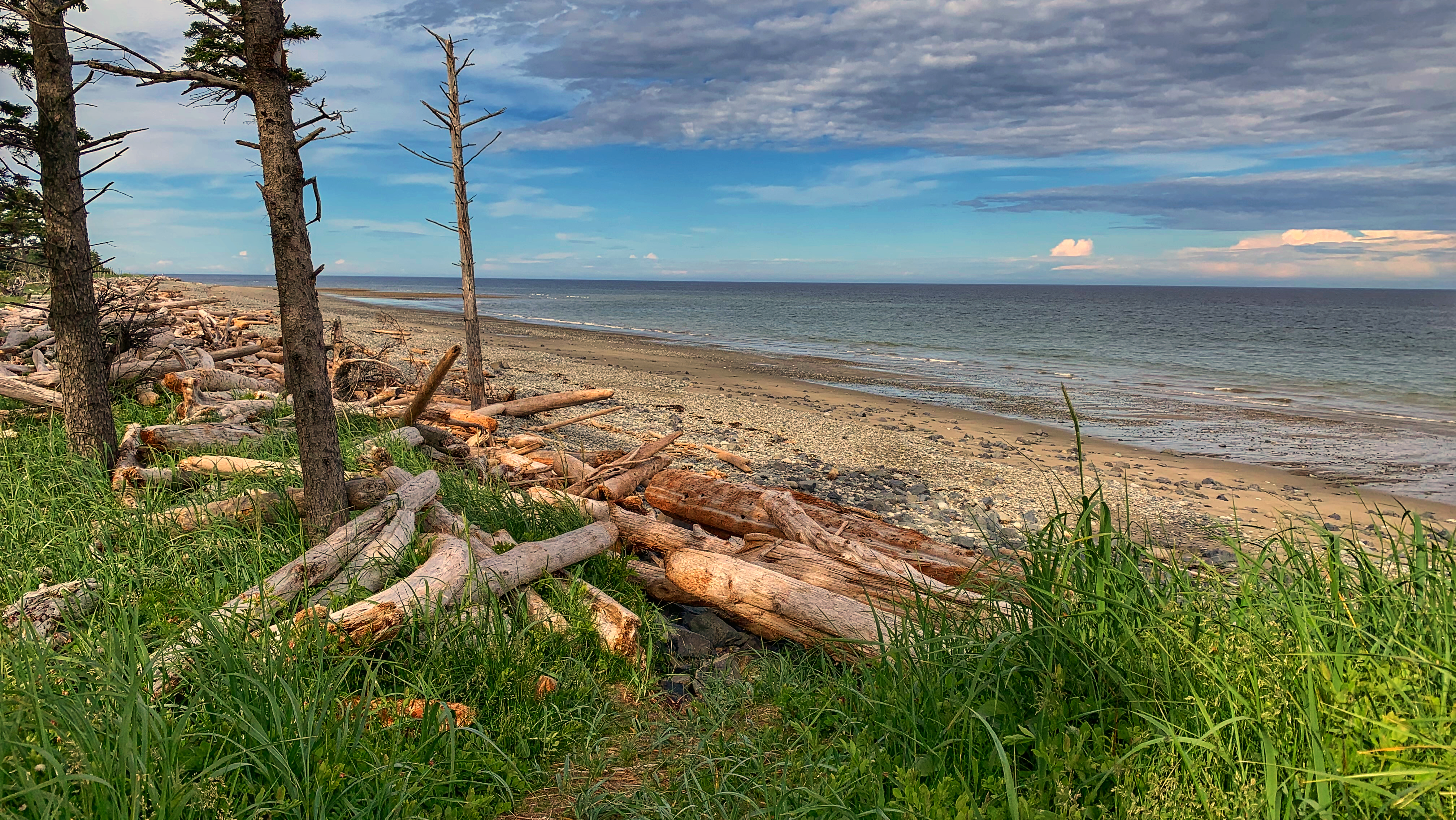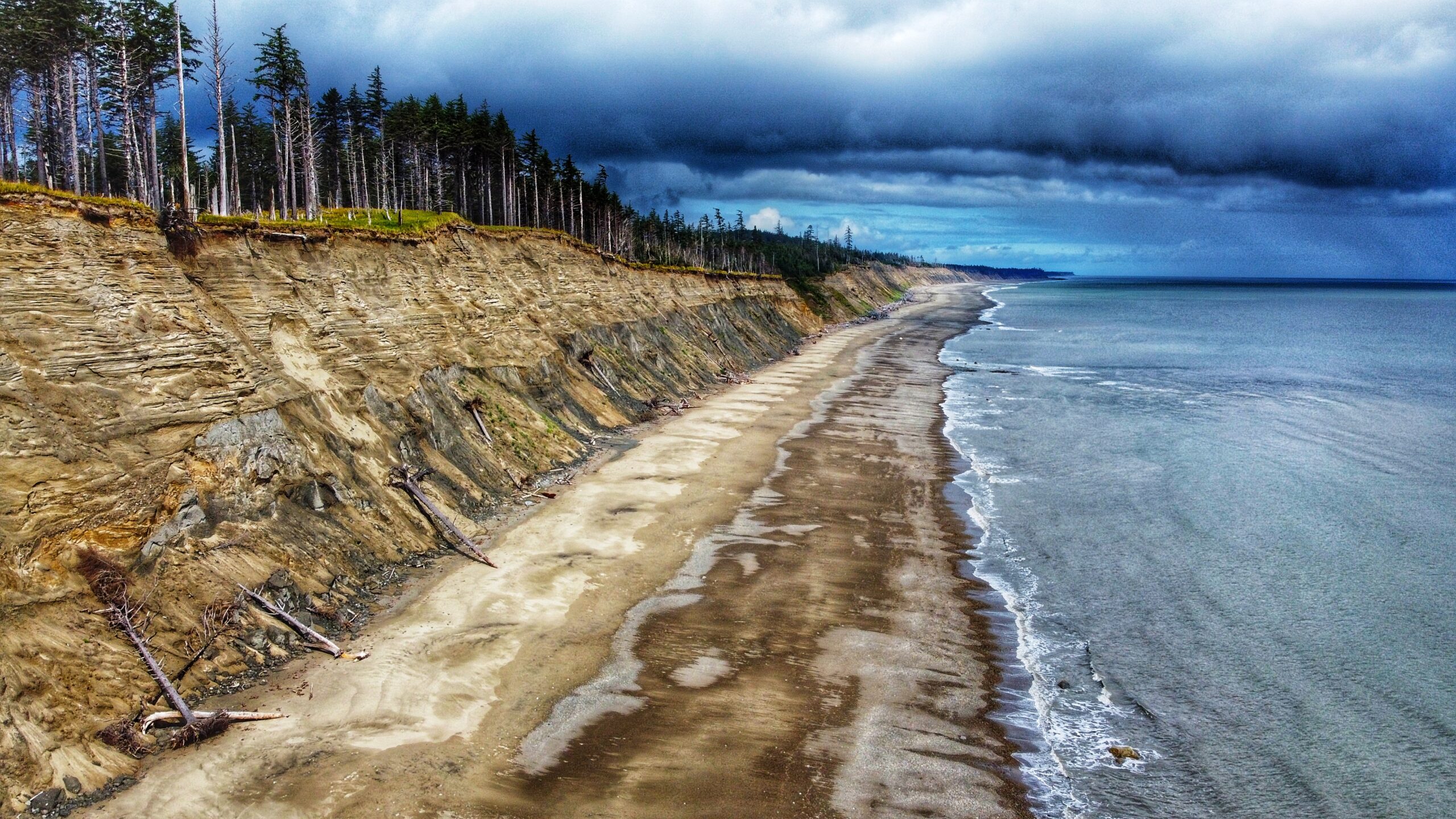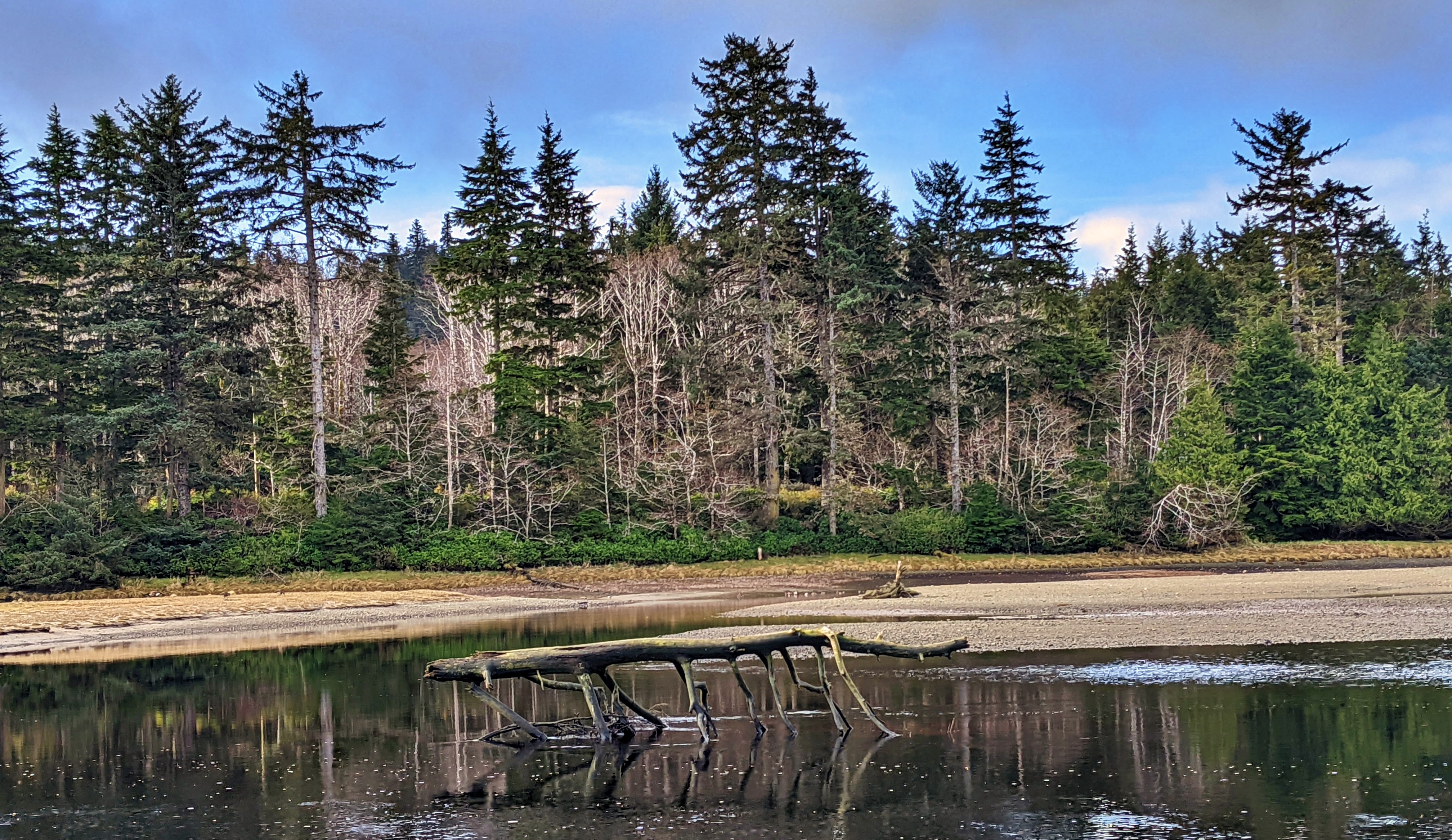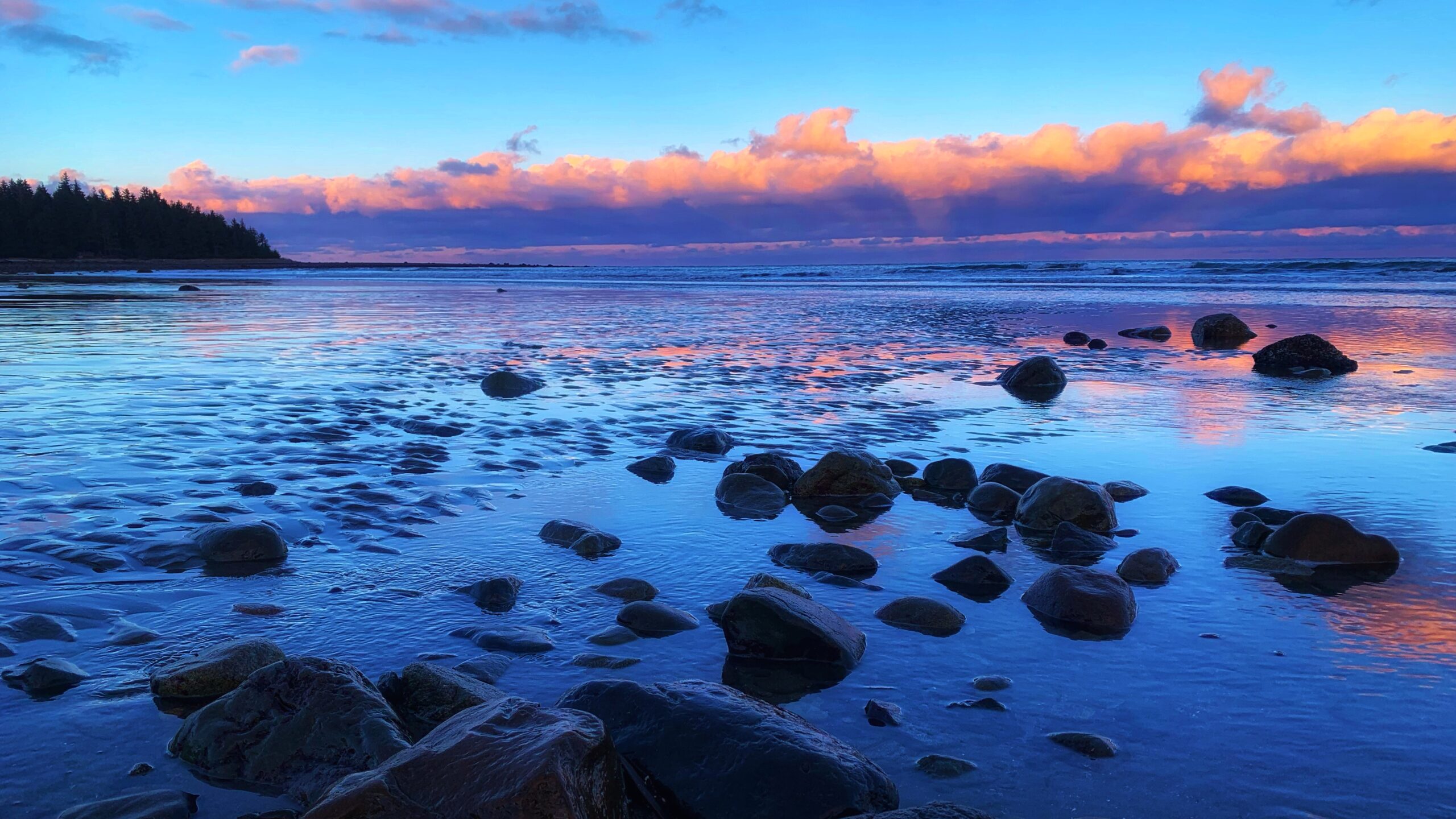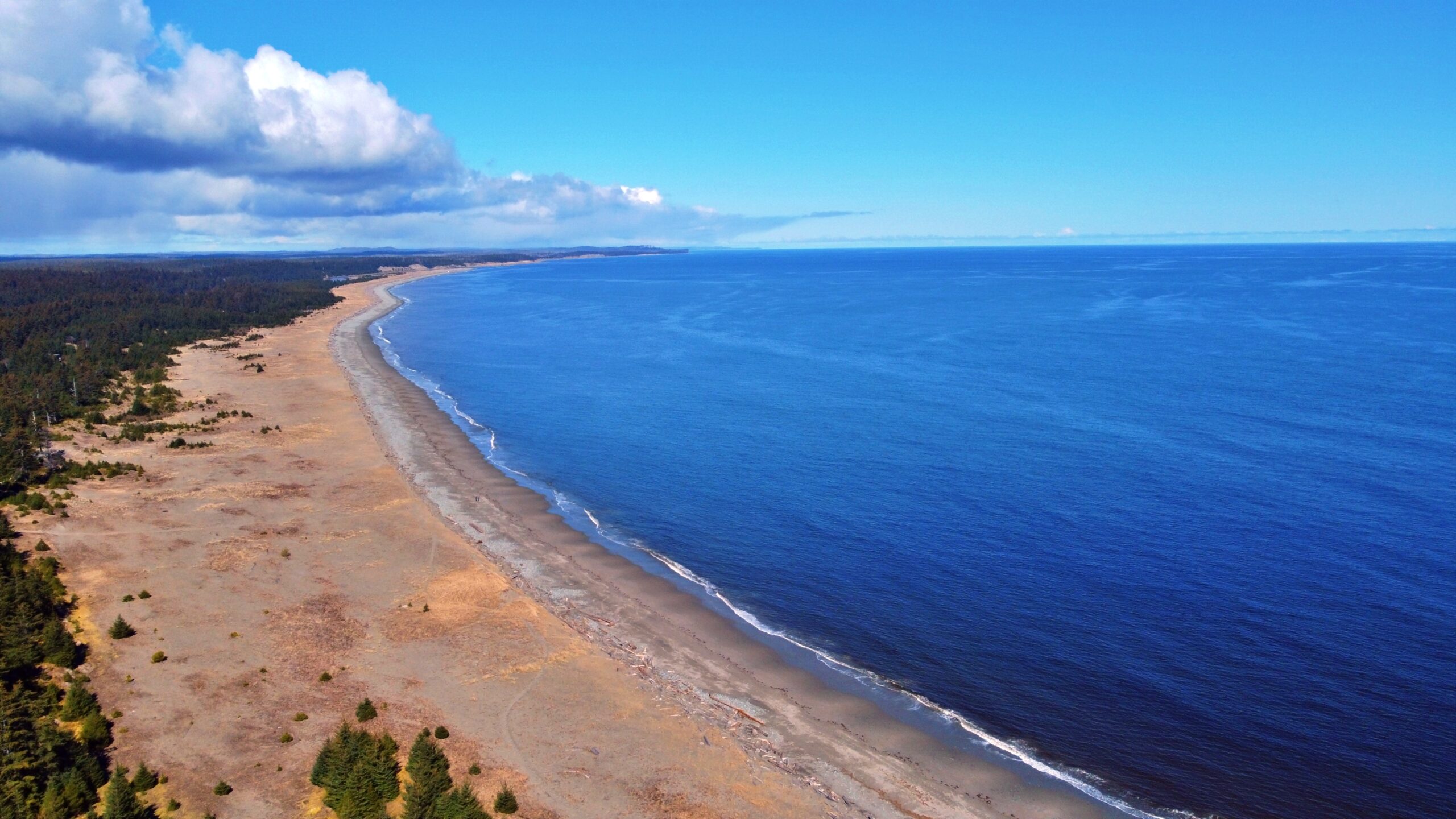Located within the Duu Guusd Conservancy, Gregory Beach offers a lovely sand and pebble beach for those wishing to relax and experience the dynamic environment that is Haida Gwaii’s rugged west coast. At the beach’s north end you will find Gregory Creek, which is home to spawning salmon in August and September. The small Gregory Beach campsite is located opposite the creek.
Category: Beach Trail
The Riley Creek Trail is the only substantive hiking trail within Rennell Sound where the trail itself functions as the attraction (with the other three, the trails are secondary to the beaches). While not formally maintained, the path is obvious and generally well-marked. When we hiked the route, there were only a couple of spots – just past the mid-way point – where we had to take a moment to locate the trail thanks to blowdown.
The Five Mile Beach Trail is short and straightforward. Clocking in at just 180 meters, it should take no more than a few minutes to reach the rocky beach. The trail, while not formally maintained, is clear. Step with caution as you near the beach, however, because there are some minor tree roots to watch out for. Once at the beach, take some time to admire the rocky shore, the surrounding mountains, and the eye-catching Five Mile Island. For those wishing to camp, there is space to set up a small tent just off the trail, adjacent the beach.
The trail to Bonanza Beach is brief @ only 400 meters one-way. As you hike towards the beach, you will be treated to second-growth forest, giant spruce burls, dense salal, and some beautiful old growth cedars as you approach the beach. It should take less than ten minutes for one to reach one of Haida Gwaii’s crown jewels: Bonanza Beach.
The Cape Fife Trail begins on the north side of the Hiellen River and is mostly flat and level the whole way. After hiking for about 5 minutes, you’ll come upon a wide open space and a fork in the trail. Cape Fife continues to your LEFT (going right will take you onto the Four Corners). Before continuing, we recommend studying the Cape Fife information board also found in this area. It outlines the route and highlights a couple of key features – study it to ensure you’re adequately prepared for the hike.
Henderson describes this hike as “a family dune walk for a sunny day.” It certainly is family-friendly, but we’d recommend walking this beach – also known as “Wiggins Road Beach” in the current day – on a low tide; otherwise, you’ll spend the duration hiking over stones of various sizes. The sandy beach is really only exposed during low tides.
Often described as “Haida Gwaii’s version of the West Coast Trail,” the East Beach Trail wilderness hike is a multi-day trek that will take you from the Tlell Day Use area all the way up towards Cape Fife and, if you’re feeling up to it, Rose Spit and Tow Hill. The total length of the hike depends on your desired exit point. If you choose to conclude your adventure at Cape Fife, you’ll have hiked approximately 78 kilometres when it’s all said and done
The Sangan River Trail is perhaps better described as a river walk than an actual trail. There is no formal trailhead, nor trail markers denoting the route; however, it is very easy to find and represents a peaceful walk – one that allows you to disconnect from the wired world and re-connect with nature and the elements. To access the Sangan River Trail, drive 10-minutes outside of Masset until you come upon the Sangan River Bridge
Located approximately 5 minutes north of Skidegate by car, you’ll find Chinukundl Creek, more popularly known as Miller Creek. Just up from the bridge, you’ll also spy Chinukundl Road. Turning up the road will take you into the informal community known as Miller Creek.
From a recreational perspective, Misty Meadows Beach Loop Trail serves as a nice introduction to the wonders of Naikoon Provincial Park. It offers beach access and some nice hiking.

